A Tour for Journalists on the Temple Mount and Major Problems in the Eastern Temple Mount Wall
Yesterday we conducted a tour for journalists on the Temple Mount which focused on the issues mentioned in our report concerning the antiquities destruction on the Temple Mount during the past 3 years. We examined the debris heaps in the location where the tractor loaded material into the trucks, and discovered a large quantity of typical Temple Mount grey soil rich with ancient pottery shards and marble Byzantine wall tiles. We also examined the stacks of architectural elements and noticed some bitumen opus sectile tiles, cut and worked in the manner consistent with tiles from King Herod’s palaces. These may have been used in the Herodian courts that surrounded the Temple.
We were pleased to notice some progress regarding the stack of the ancient beams that are lying in the Golden Gate courtyard (fig. 1). To help protect them from rain and adverse weather conditions, they were now covered with a plastic sheet as we suggested in our report from last week. However, they are still lying directly on the pavement, so they cannot breathe and dry out. It would be helpful if they were elevated on wooden pallets.
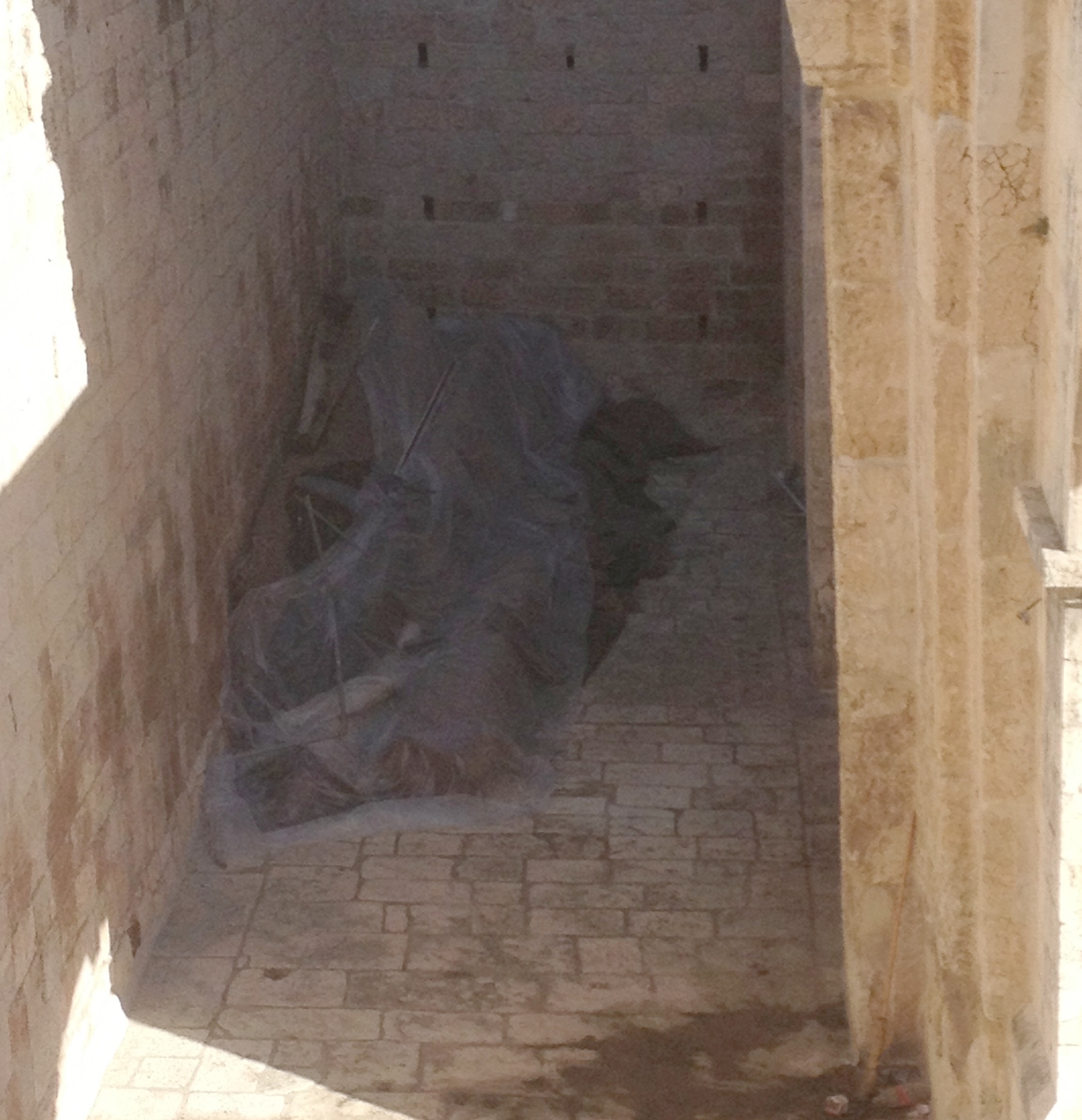
We exited the Temple Mount area via Lion’s Gate to examine the reconstruction work in progress on the eastern wall. We noticed that the middle courses of the wall are in a very bad condition and appear to be unstable. There are cracks and gaps between the stones. In the recent years, many sections of the wall have been replaced, and now another section has been dismantled in a manner that seems quite unsafe, which may cause even further collapse (fig. 2).
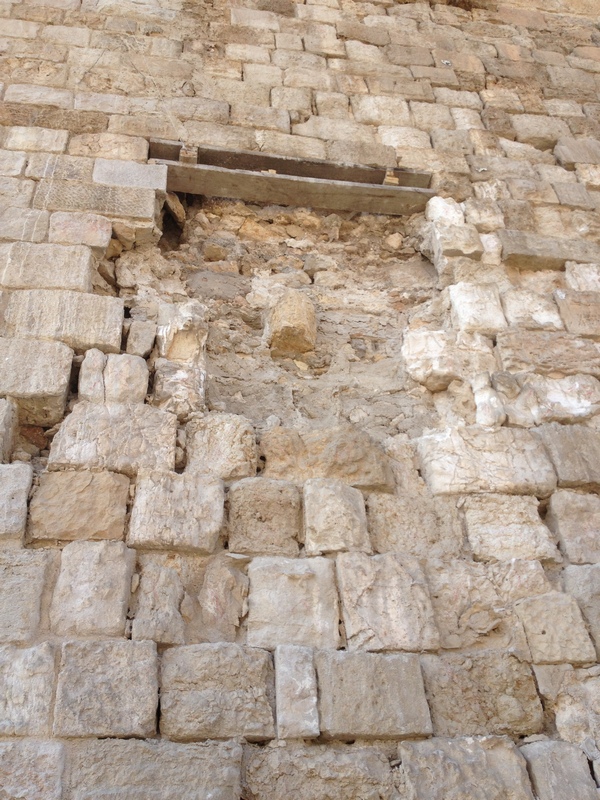
When the eastern and southern Temple Mount began to bulge as a result of the Waqf’s work in the Solomon’s Stables area, the Waqf would not agree that Israel would supervise the reconstruction works, rather it was carried out by a Jordanian and Egyptian teams. The dismantling of the stones was done without any archaeological supervision or examination. When archaeologists dismantle an ancient wall, it is an opportunity for them to examine the small archaeological finds that are between, behind and beneath the stones. This kind of examination can help date the time of construction and reconstruction of the wall. Unfortunately, this current reconstruction work is being carried out in courses of the eastern wall that have not yet been firmly dated, and is being done without proper archaeological preservation and reconstruction techniques. Many ancient stones have been replaced with new modern stones that result in very disturbing patches in the ancient the Temple Mount walls (fig. 3).

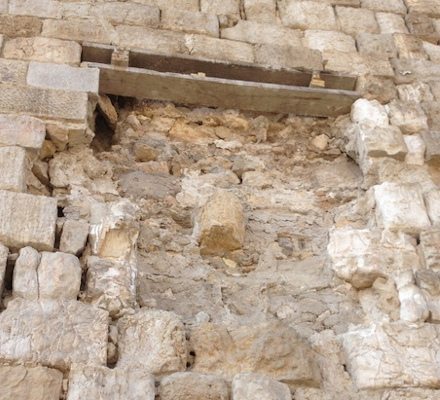
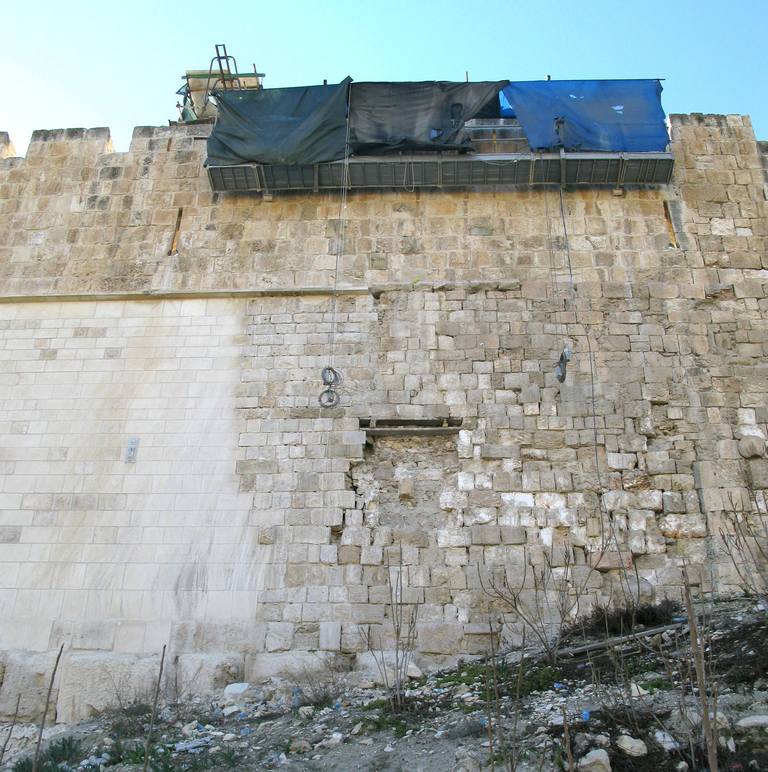

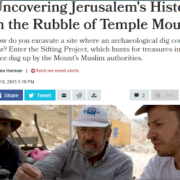


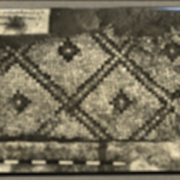





Leave a Reply
Want to join the discussion?Feel free to contribute!